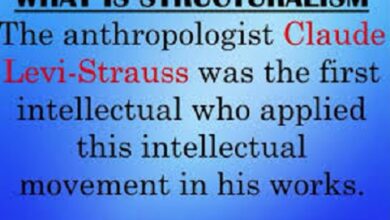What is Allegory in Literature in Mythology and examples
Allegory
Allegory (from the Greek ” allegoría ” which means “to say the other”) is a philosophical concept and a figure of speech, used in several arts (painting, sculpture, architecture, music, etc.) which literally means the act of speaking about something else.
The Allegory in Literature
In literature, allegory represents a figure of speech, more precisely a figure of speech with a moral character.
It leaves aside its merely denotative meaning, to put into practice the figurative meaning of words, that is, the duplicity of meanings, or even their plurissignification (multiplicity of meanings).
For many scholars, allegory represents an extended metaphor and, in some cases, is similar to personification or prosopopoeia.
According to the rhetoricians of antiquity, allegory differs from metaphor, as it is used more openly and widely (in a fable, parable, novel, poem), while metaphor considers the elements that make up the text independently.
In this sense, the allegory can harbor several meanings that transcend its literal meaning (denotative, real), so that it uses symbols to represent a thing or an idea through the appearance of another.
In other words, allegory represents figurative language, to describe something (person, object, etc.) with the image of another.
In Fables and Parables
This rhetorical resource is widely used in literature, especially in fables and parables marked by the relationship between the literal meaning and the figurative meaning.
The fable and the parable represent types of literary texts that work with allegory in order to convey the message in a symbolic, enigmatic way. That is, they use allegory to reveal hidden truths.
According to the German philosopher Martin Heidegger:
“The work of art is, in effect, a thing, a manufactured thing, but it still says something different than what the simple thing is, ‘allo agoreuei’. The work makes something else publicly known, it reveals something else to us: it is allegory. To the manufactured thing, in the work of art, something of the other is added. Gathering together is called symballein in Greek. The work is a symbol .”
The main characteristic in the choice of these types of literary texts is precisely their moral character, in a way that they use the personification of moral principles or supernatural forces.
In the fable , moral principles or virtues are often represented by animals in imaginary worlds, which has didactic and educational purposes.
The parable, on the other hand, hides the real characters (family, friends, etc.), and not just the moral principles that appear behind an “allegorical mask”.
Thus, the parable can be played by human beings within a real world, being very common to find it in sacred texts, for example, the parables of the bible.
In Mythology
Allegory has been discussed since antiquity and was widely used in mythological narratives, in order to explain human life and the forces of nature.
For the Greeks, it meant an interesting way of interpreting life.
Through the allegories, it was possible to transcend limits by unraveling mysteries, as well as helping in the construction of new ideals and paradigms that remained subtended.
Many religious texts, in order to reveal the hidden truth, use allegorical interpretations (theological allegory), for example, the Bible.
The Allegory in Plato’s Myth of the Cave
When we talk about allegory, it is common to use as an example the “Myth of the Cave”, written by the Greek philosopher, Plato.
This text uses the allegory where the represented elements would be used to reveal human ignorance.
Thus, in the cave men would live in ignorance and when they come out of it, they transcend this process, revealed by the truth, by the real.
The allegory in contemporary times
The satirical novel entitled ” Animal Farm ” by the English writer George Orwell was published in 1945, being the most notorious example of allegory in contemporary times.
In the work, Orwell uses allegorical elements to criticize Russian communist society as well as authoritarianism.
Examples of Allegory
“Life is an opera, it’s a great opera. The tenor and the baritone fight for the soprano, in the presence of the bass and the second, when it is not the soprano and the alto who fight for the tenor, in the presence of the same bass and the same second. There are numerous choirs, many ballets, and the orchestra is excellent…” (Machado de Assis)
Frequently present in the daily lives of speakers, allegories are used in popular proverbs (in a river where piranhas are found, alligators swim on their backs; scalded cats are afraid of cold water), in fables with moral and educational purposes, and in parables from the Bible.
- Sermon of Saint Anthony to the fish (Father Antônio Vieira)
- The Myth of the Cave (Plato)
- Auto da Barca do Inferno (Gil Vicente)
- The Grasshopper and the Ant (La Fontaine)
- The Prodigal Son (Luke, Bible)
allegory and metaphor
Allegory and metaphor develop within the scope of connotative language, assuming a figurative and symbolic sense. The main distinction made between allegory and metaphor concerns the frequency and extent of the use of symbolic language. The metaphor is used more punctually, referring to isolated terms. The allegory occurs throughout the text, being formed by several interconnected metaphors.
allegory and symbol
Very similar, some authors distinguish the allegory and the symbol by the immediate understanding or not of the second meaning of the text. In the symbol, the understanding of the figurative meaning of the text is immediate, since it is presented entirely. In allegory, a global interpretation of the text is necessary to identify the figurative meaning of the text, since this is built throughout the text, element by element.


